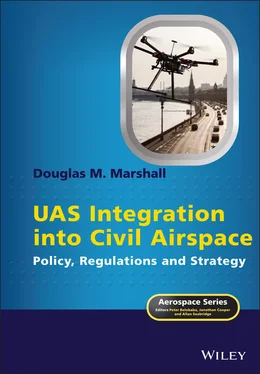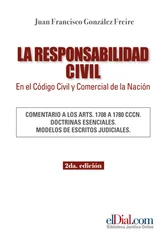Another major distinction between EASA and NTSB is that the former is only chartered to oversee aviation safety, whereas the NTSB also has more or less exclusive jurisdiction over other non-aviation transportation sectors, such as railway, highway, marine, and pipeline. NTSB investigators will respond anywhere in the world to aviation accidents involving products manufactured in the US. The NTSB “Go Teams” only respond to accidents that occur on US territory or in international waters. Elsewhere, the lead investigator is by default the government in whose territory the accident occurs, often assisted by a US “accredited representative” from the NTSB’s staff of “investigators in charge” (IICs) if a US carrier or US manufactured airplane is involved.
Virtually every member of the United Nations (currently numbering 193 Member States and 2 non-member observer states) has its own version of domestic aviation regulations, which for the most part is patterned after the Chicago Convention articles and annexes. As noted above, the Chicago Convention established the International Civil Aviation Organization as a means to secure international cooperation and the highest possible degree of uniformity in regulations and standards, procedures, and organization regarding civil aviation matters. The Convention produced the foundation for a set of rules and regulations regarding air navigation as a whole, with the intent to enhance safety in flying by laying the groundwork for the application of a common air navigation system throughout the world.
ICAO works in close cooperation with other members of the United Nations family, such as the World Meteorological Organization, the International Telecommunication Union, the Universal Postal Union, the World Health Organization, the International Maritime Organization and the Arctic Council. Aviation-related non-governmental organizations (NGOs) also participating in ICAO’s efforts include the International Air Transport Association, the Airports Council International, the International Federation of Air Line Pilots’ Associations, and the International Council of Aircraft Owner and Pilot Associations.
A comprehensive analysis of the aviation regulatory schemes in each and every country that publishes some form of regulation is beyond the scope of this book. However, since ICAO Member States contract to follow ICAO’s rules and supplementary material, and to publish for all to see any exceptions taken to any ICAO Article, Annex, Regional Supplementary Procedure (“SUPPS”) or Procedures for Air Navigations Services (PANS), the beginning point must be the aforementioned ICAO rules and procedures themselves, with particular focus on those provisions related to safe integration and management of domestic and international airspace.
The Chicago Convention and the International Civil Aviation Organization
The Aeronautical Commission of the Peace Conference of 1919 (otherwise known as the Versailles Treaty) created an international agreement (the Convention for the Regulation of Aerial Navigation) that recognized that the airspace above the high seas was not as “free” as the oceans beneath. The contracting States to that Convention agreed that the States had exclusive jurisdiction over the airspace above the land and territorial waters of the States, but agreed to allow, in times of peace, innocent passage of civil aircraft of other States through their sovereign airspace, so long as the other provisions of the Convention were observed. States still retained the right to create prohibited areas in the interests of military needs or national security. During the years leading up to World War II and throughout that conflict the United States initiated studies and later consulted with its major allies regarding further harmonization of the rules of international airspace, building upon the 1919 Convention. Anticipating the pending termination of the hostilities and desiring to re-establish international transport by air, the US government invited 55 states and civil aviation authorities to attend a meeting to discuss these issues and to promote cooperation and “create and preserve friendship and understanding among the nations and peoples of the world,” and in November 1944, an International Civil Aviation Conference was held in Chicago. Fifty-four nations (they are referred to as “States” in the Convention) attended this conference, and 52 of those nations signed the new Convention on International Civil Aviation . The convention created a specialized agency, the International Civil Aviation Organization (ICAO), to oversee the terms of the Convention, and as a means to secure international cooperation and the highest possible degree of uniformity in regulations and standards, procedures, and organization regarding civil aviation matters. The Chicago Conference laid the foundation for a set of rules and regulations regarding air navigation as a whole, which was intended to enhance safety in flying and construct the groundwork for the application of a common air navigation system throughout the world.
ICAO’s many objectives are set forth in the 96 Articles of the Chicago Convention and the 18 annexes thereto. Numerous published supplements (Standards and Recommended Practices, or SARPS) and Procedures for Air Navigation Services (PANS) (which are under continual review and revision) set forth additional standards and guidelines for Contracting States. These Contracting States may take exception to any element of the annexes, and those exceptions are also published. Contracting States are also responsible for developing their own aeronautical information publications (AIPs), which provide more detailed information to ICAO and other States about air traffic, airspace, airports, navaids (navigational aids), special use of airspace, weather, and other relevant data that are available for use by aircrews arriving into or transiting through the State’s airspace. The AIPs also contain information about the State’s exceptions to the annexes and any significant differences between the rules and regulations of the State and ICAO’s rules.
The annexes cover personnel licensing (Annex 1), rules of the air (Annex 2), meteorological services for international air navigation (Annex 3), aeronautical charts (Annex 4), units of measurement to be used in air and ground operations (Annex 5), operation of aircraft (Annex 6), aircraft nationality and registration marks (Annex 7), airworthiness of aircraft (Annex 8), facilitation of border crossing (Annex 9), aeronautical communications (Annex 10), air traffic services (Annex 11), search and rescue (Annex 12), aircraft accident investigation (Annex 13), aerodromes (Annex 14), aeronautical information services (Annex 15), environmental protection (Annex 16), security-safeguarding international civil aviation against acts of unlawful interference (Annex 17), and the safe transportation of dangerous goods by air (Annex 18). The only reference to unmanned aircraft in the Convention is in Article 8, which states that:
No aircraft capable of being flown without a pilot shall be flown without a pilot over the territory of a contracting State without special authorization by that State and in accordance with the terms of such authorization. Each contracting State undertakes to ensure that the flight of such aircraft without a pilot in regions open to civil aircraft shall be so controlled as to obviate danger to civil aircraft.
ICAO’s rules apply to international airspace, which is typically defined as the airspace over the high seas more than 12 miles from the sovereign territory of a State (country), as well as some domestic airspace by virtue of incorporation into a contracting State’s own regulatory scheme. The rules just apply to the 193 Member States, so any nation that declines to become an ICAO member is not entitled to the protection of ICAO’s rules. However, ICAO is a voluntary organization and there are no provisions for enforcement of the regulations or standards such as those found in the US Federal Aviation Regulations or similar regulatory provisions enacted by the Member States. As a practical matter, a nation that elects to not be an ICAO Member State will find that no foreign air carriers will be allowed to land in that nation’s airports, except in an emergency, and that nation’s airlines, if any, will not be permitted to operate in the airspace of a Member Nation.
Читать дальше












